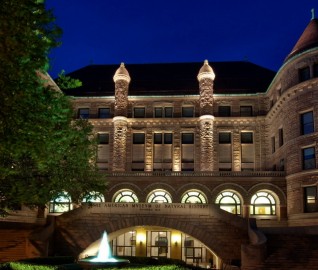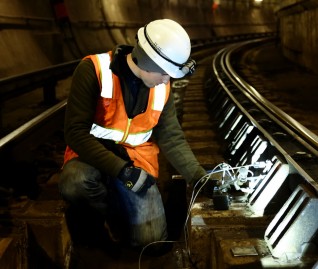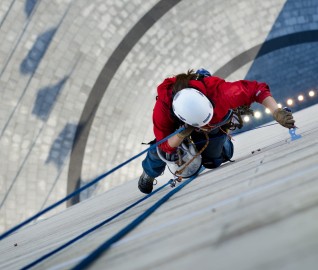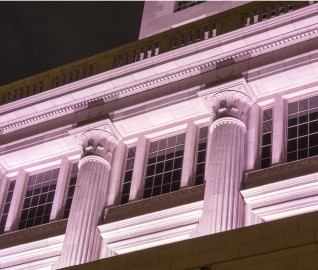WJE PROJECTS
Iowa State University Brunnier Art Museum


CLIENT |
Iowa State University (ISU) |
LOCATION |
Ames, IA |
Water Leakage and Condensation Investigation
Facility staff at the Scheman Building had reported moisture, water staining, and interior finish damage at various locations throughout the building, most predominantly within the Brunnier Art Museum. The signs of moisture issues in the museum were typically located below the clerestory windows, below structural penetrations into the roof overhang, at exposed exterior concrete columns, and along the exterior perimeter of the floor. The museum was humidified in the winter for the benefit of the artwork and despite several repair attempts, moisture issues persisted.
BACKGROUND
Brunnier Art Museum is located within the Scheman Building on the campus of Iowa State University. The museum includes 11,000 square feet of space with a permanent collection of fine arts and regularly changing exhibits.
The Scheman Building was completed in 1975 and the facade is primarily constructed with expressed cast-in-place concrete structure with precast concrete cladding. Steel and glass glazing systems infill openings in the concrete. Only a small section of clerestory windows within the museum is exposed on the interior; otherwise, the windows are concealed by cedar boards. The roof overhangs the exterior wall of the museum and the underside of the overhang is vented and clad with painted wood cedar boards.
SOLUTION
WJE investigated avenues for water infiltration as well as potential for condensation at the exterior walls of the museum. The services included a review of available documentation, a visual evaluation of the exterior enclosure, detailed observations at inspection openings in the interior finishes, water infiltration testing at the overhang and clerestory, and various methodologies—including smoke pens, infrared thermal cameras, and self-contained and remotely monitored sensors/data loggers—to evaluate air temperature and relative humidity, surface temperatures, and building pressurization.
The investigation revealed that both water infiltration and cold weather condensation were causing the moisture issues. Water infiltration was occurring via the precast cladding joints and the glazing perimeter joints. Condensation was occurring as a result of thermal bridging of structural steel and concrete elements, as well as exfiltration of humidified interior air at the clerestory windows and the roof overhang at discontinuities in the interior foam insulation and/or interior finishes.
WJE provided “Priority 1,” “Priority 2,” and “Priority 3” repair recommendations to Iowa State University to systematically and incrementally address each of the issues (considering the museum operations and the historical significance of the building).
RELATED INFORMATION
-
 Our professionals deliver practical repair and rehabilitation services that maximize the... MORE >Services | Repair and Rehabilitation
Our professionals deliver practical repair and rehabilitation services that maximize the... MORE >Services | Repair and Rehabilitation -
 We engage a full suite of state-of-the-art instrumentation and monitoring capabilities to test... MORE >Services | Instrumentation and Monitoring
We engage a full suite of state-of-the-art instrumentation and monitoring capabilities to test... MORE >Services | Instrumentation and Monitoring -
 We apply the lessons learned from more than 175,000 projects to provide clients with a full... MORE >Services | Condition Evaluation
We apply the lessons learned from more than 175,000 projects to provide clients with a full... MORE >Services | Condition Evaluation -
 Our professionals balance the need to provide practical, long-term solutions with the ability to... MORE >Services | Historic Preservation
Our professionals balance the need to provide practical, long-term solutions with the ability to... MORE >Services | Historic Preservation









































